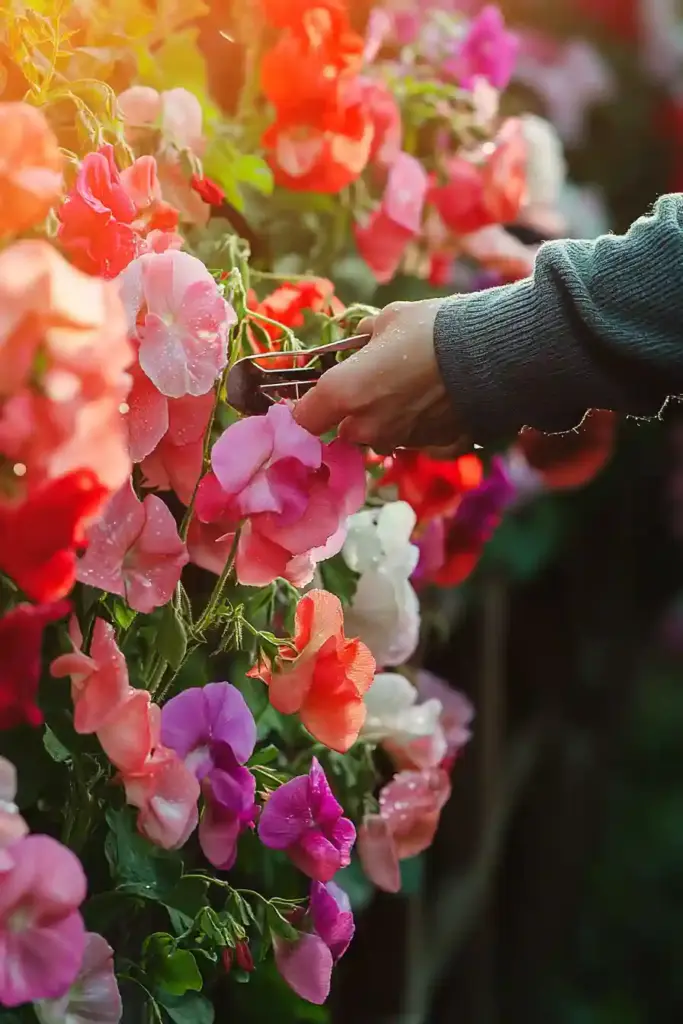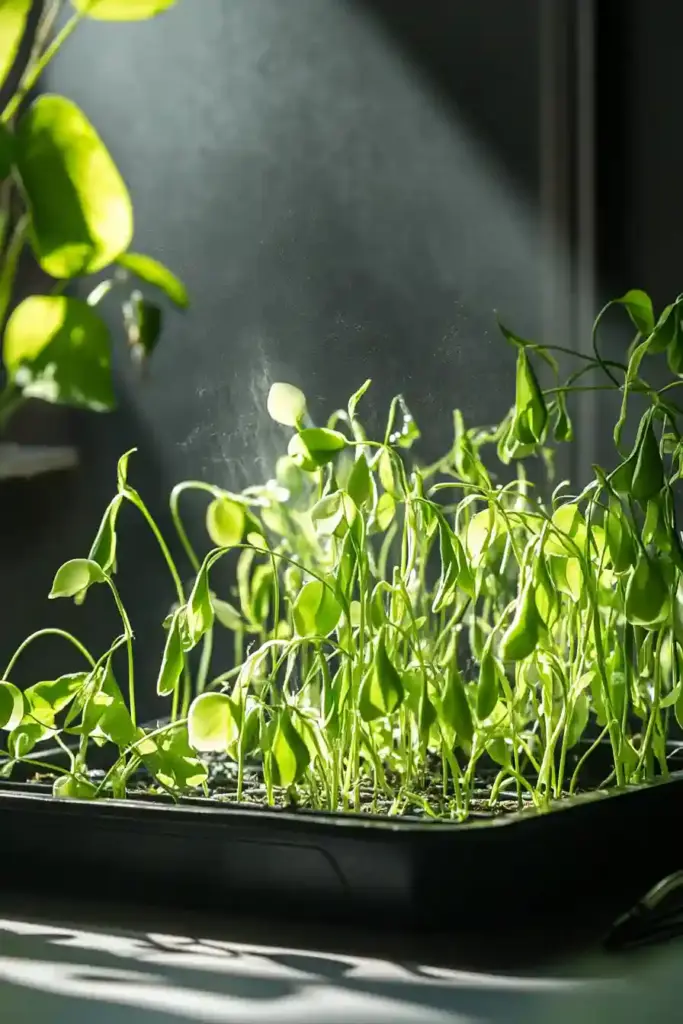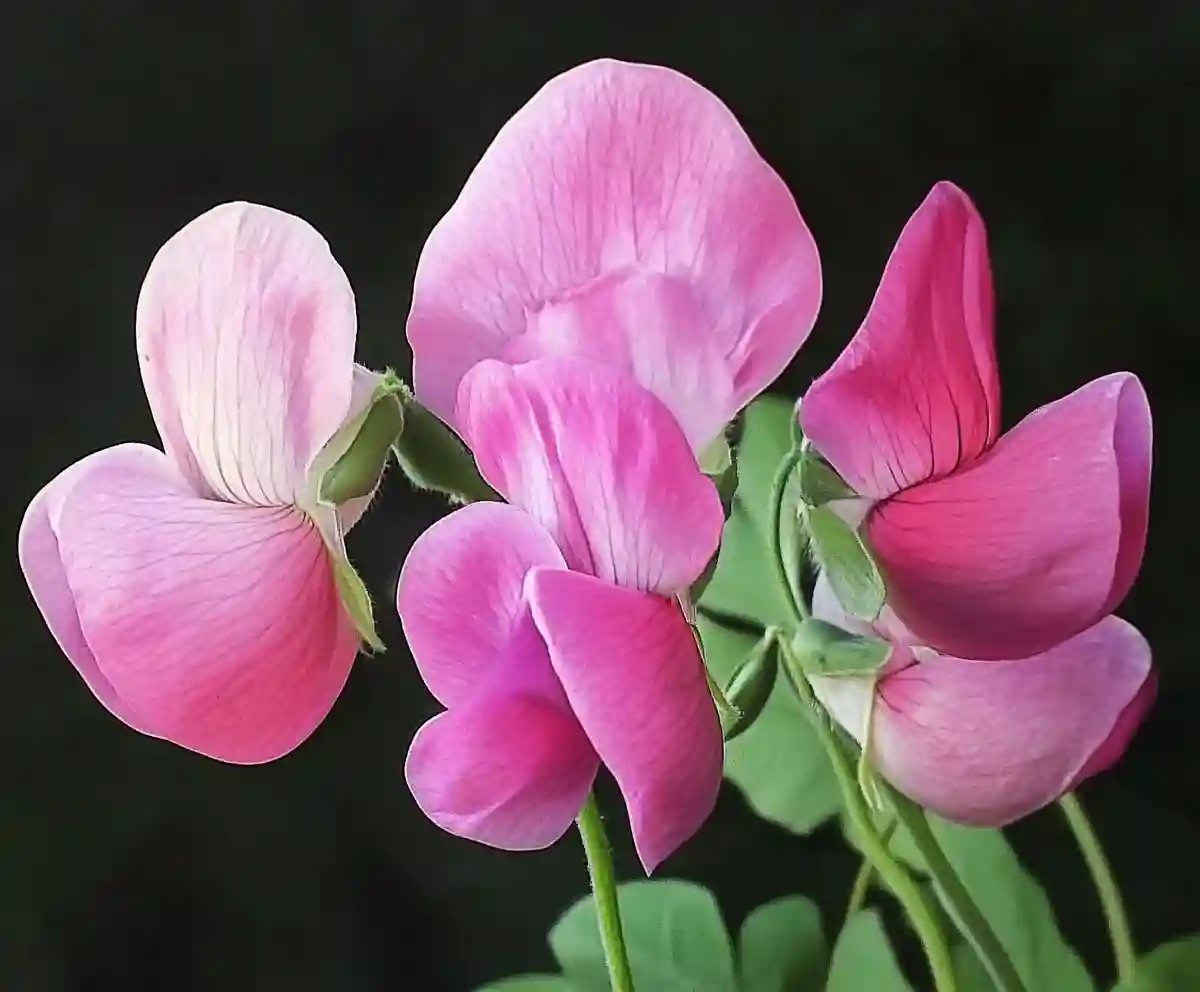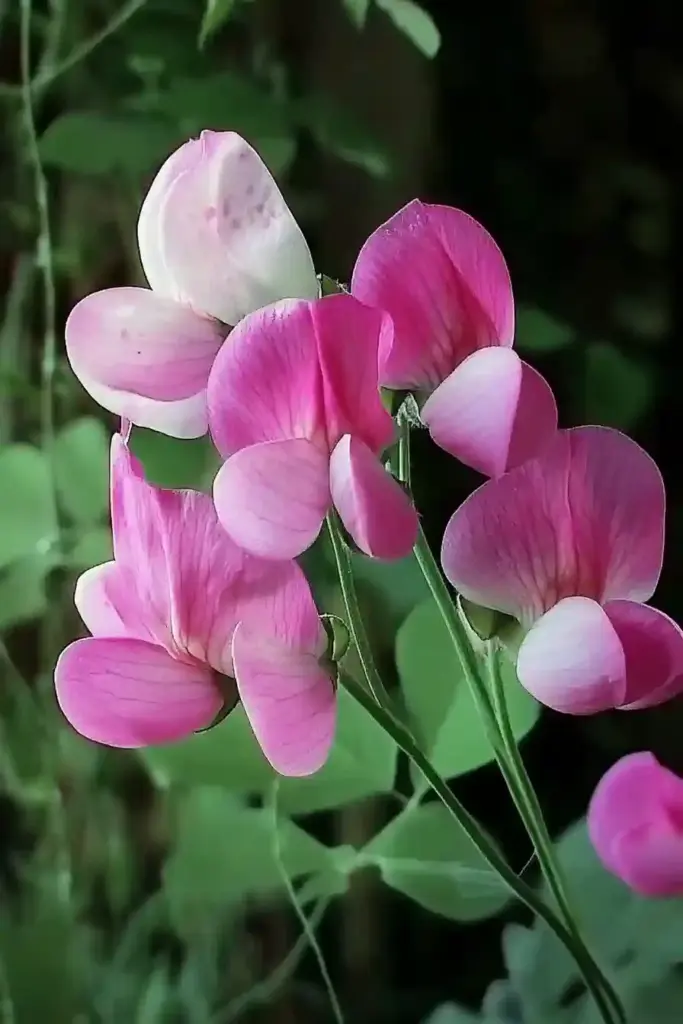If you’ve ever dreamed of adding a touch of vintage charm and irresistible fragrance to your garden, sweet peas might be the perfect pick. These delicate climbers, known for their ruffled petals and nostalgic scent, can transform your garden into a storybook setting. But if you’ve struggled with them in the past—or you’re planting them for the first time—learning how to grow sweet peas from seed can make all the difference.
While they have a reputation for being tricky, sweet peas are actually quite manageable once you understand their unique preferences. This guide breaks down everything you need to know to successfully start sweet peas from seed—no greenhouse or fancy equipment required.
For those looking to weave even more classic charm into their outdoor space, be sure to explore Create an English Garden with These 14 Classic Flowers. This companion guide offers creative inspiration and practical tips for pairing your sweet peas with other traditional blooms, helping you craft a truly enchanting, storybook garden that captivates every season.
🌸 Why Grow Sweet Peas?
There’s something undeniably magical about sweet peas. It starts with their graceful, climbing vines and dreamy, pastel blooms—but it’s the fragrance that truly steals the show. Light, nostalgic, and floral with a hint of honey, sweet peas bring a romantic elegance to any garden.
Gardeners love sweet peas not just for their beauty, but also for their versatility. These annuals are perfect for vertical growing—whether on trellises, arches, or fences—and they’re a beloved favorite in cut flower arrangements. Even a small patch can yield weeks of blooms with the right care and a bit of early planning.
But here’s the catch: sweet peas thrive in cool weather, and that’s where many growers go wrong. Once you understand their seasonal needs, you’ll be well on your way to enjoying a garden full of fragrant, cascading blooms.
⚠️ The Most Common Mistake When Growing Sweet Peas

If you’ve planted sweet peas before and ended up with scraggly stems or sparse blooms, you’re not alone. One of the biggest misconceptions is that these dainty flowers need warmth to thrive. In reality, sweet peas love the cold—and too much heat early on can seriously stunt their growth.
Here are the top mistakes many beginners make when learning how to grow sweet peas from seed:
- Starting seeds on a heat mat: Sweet peas germinate best in cooler temperatures (around 50–55°F). Too much warmth can delay or prevent sprouting.
- Waiting until after the last frost to plant: By that time, it’s often too warm. Sweet peas need time to establish strong roots before the heat of summer.
- Planting in soil that warms up quickly: Sweet peas struggle in hot conditions and may stop flowering if temperatures spike above 80°F.
💡 The key takeaway? Think of sweet peas as a cool-season flower. Start them early, let them get cozy with chilly temps, and they’ll reward you with lush vines and abundant blooms when spring rolls in.
🗓️ When and How to Sow Sweet Pea Seeds

Timing is everything when you’re learning how to grow sweet peas from seed. Because these flowers love the cold, starting them too late or in warm conditions can lead to disappointment. The good news? You don’t need a greenhouse or fancy setup—just the right schedule and a few simple tools.
🕰️ When to Sow

- Cold Climates (Zones 4–6): Start seeds indoors between late January and early March. Transplant outdoors as soon as the soil is workable, often by mid to late April. Sweet peas can handle dips into the low 20s°F, so don’t wait for the last frost.
- Mild Climates (Zones 7 and up): You may be able to plant in fall and let them overwinter naturally. This gives them a head start when spring arrives.
🌼 Pro Tip: Let nature guide you—when the first daffodils start to peek up, it’s usually time to plant your sweet peas outside.
🌱 How to Sow

- Choose deep containers. Sweet peas grow long taproots and need room to stretch. Use deep cell trays (like 50-cell trays or root trainers).
- Use a well-draining mix. Fill trays with seed-starting soil or potting mix.
- Sow one seed per cell, about ½ to 1 inch deep.
- No need to soak seeds. Some gardeners recommend it, but it’s not necessary.
- Keep trays cool (around 50–55°F). A minimally heated space like a basement or cool room works great.
- Germination takes 7–10 days. Once sprouted, move trays to a bright, cool area to avoid leggy seedlings.
💡 Keep your LED grow lights just a couple inches above the seedlings—this encourages stocky, strong growth rather than tall, flimsy stems.
🌿 Transplanting Sweet Peas Outdoors
Once your seedlings are established and the soil outside is workable, it’s time to move them into the garden. Transplanting at the right moment is key to ensuring strong roots and a robust flowering season.
🌡️ When to Transplant
You can transplant sweet peas outdoors once nighttime temps consistently stay above 20°F. Don’t worry if there’s still a chill in the air—these plants are tougher than they look and actually prefer the cool!
🌾 How to Transplant
- Harden off seedlings gradually over 7–10 days by placing them outdoors for a few hours each day, increasing exposure time.
- Choose a sunny spot with well-draining, fertile soil.
- Space seedlings 4–6 inches apart. Tighter spacing gives a lush, romantic look as the vines grow and intermingle.
- Add support right away. Sweet peas are natural climbers and will need a trellis, fence, arch, or netting to cling to. Consider:
- Hortonova netting for a practical trellis.
- Cattle panel arches for a dreamy, walk-through garden moment.
🌼 Bonus Tip: Installing your support structure during planting prevents damaging the roots later and sets your sweet peas up for a vertical flourish.
💧 Caring for Your Sweet Peas

Once your sweet peas are in the ground and climbing, the real fun begins. These cool-season beauties grow quickly and reward you with a cascade of blooms—if you give them the right care.
🌱 Keep Growth in Check
In early spring, as the days begin to warm, sweet peas will take off. The goal is to encourage as much growth as possible before the weather gets hot, since high temps (above 80°F) will cause flowering to slow or stop altogether.
Here’s how to keep them happy:
- Water consistently, especially during dry spells. Keep soil evenly moist but not soggy.
- Feed lightly with a balanced, low-nitrogen fertilizer if your soil is lacking nutrients. Too much nitrogen will push foliage over flowers.
- Train your vines. Gently guide tendrils up their support system to help them climb and spread evenly.
✂️ Harvesting and Deadheading
Want more blooms for longer? Pick often!
- Harvest flowers regularly to encourage more buds.
- Deadhead spent blooms to prevent the plant from going to seed, which signals it to stop flowering.
- Use sharp snips and cut just above a leaf node for clean, healthy cuts.
🌼 The more you pick, the more they’ll bloom—it’s the sweet pea way!
🌟 Conclusion: A Garden Full of Sweet Pea Charm
Growing sweet peas from seed is one of the most rewarding spring garden projects you can take on. With a little cool-weather planning and thoughtful care, these fragrant, nostalgic blooms will reward you with weeks of color, scent, and joy.
Whether you’re filling trellises with ruffled pastels or cutting daily bouquets for your kitchen table, learning how to grow sweet peas from seed opens the door to a garden experience that feels both timeless and magical.
So don’t be discouraged by their finicky reputation—embrace the chill, sow early, and let sweet peas work their old-fashioned charm in your garden this season. 💐


